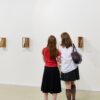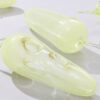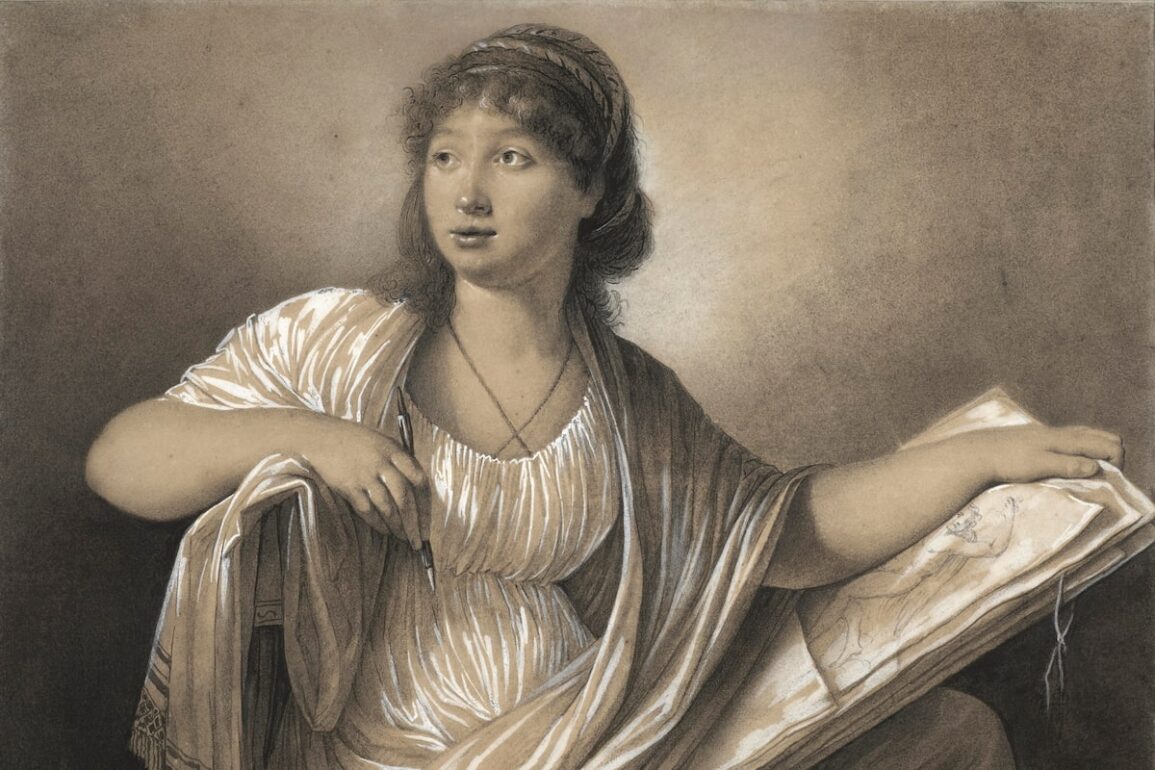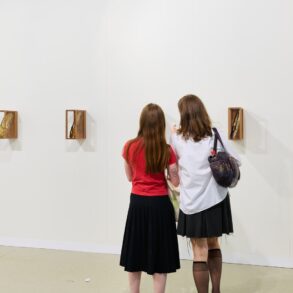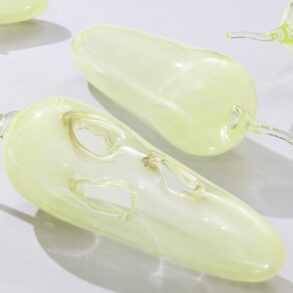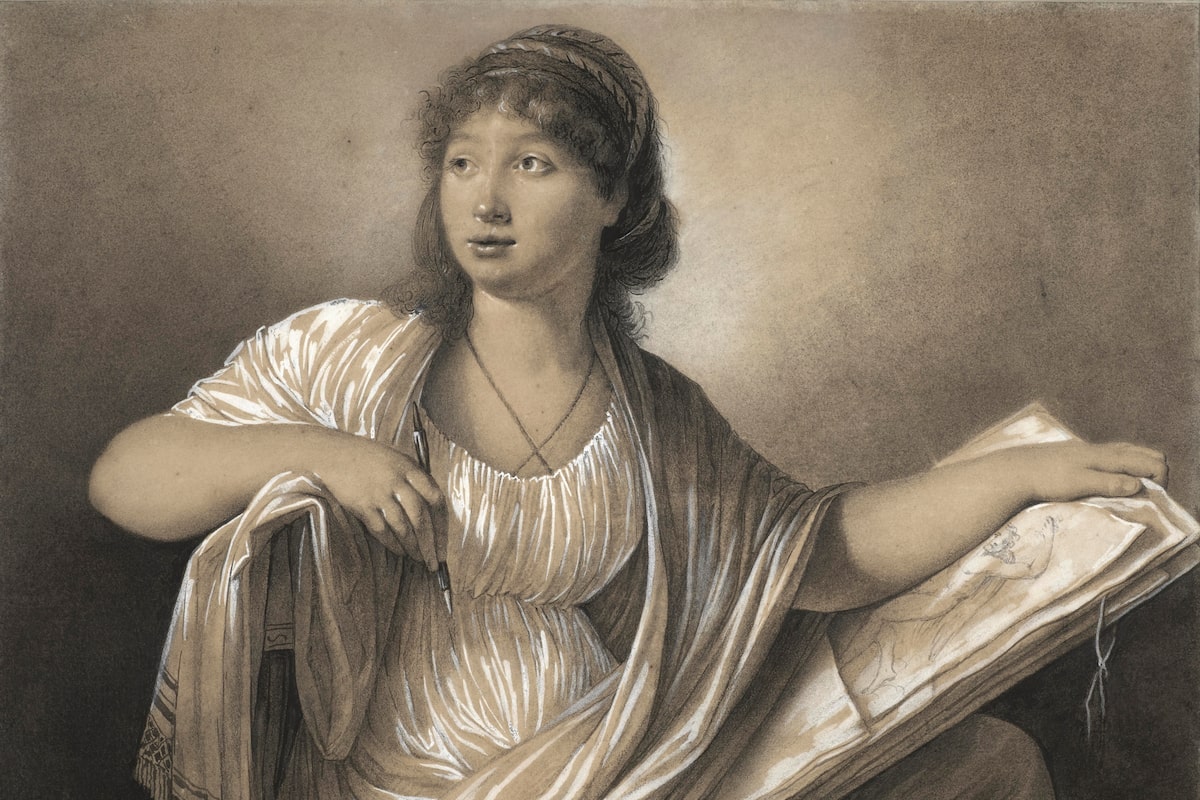
Judith Leyster. Self-Portrait, c.1630. Oil on canvas, Unframed 74.6 × 65.1 cm. National Gallery of Art, Washington, Gift of Mr. and Mrs. Robert Woods Bliss, 1949.6.1. Courtesy National Gallery.Handout
The new exhibition Making Her Mark at the Art Gallery of Ontario begins with a 53-year-old question: “Why have there been no great women artists?” That was the title of a 1971 essay by American art historian Linda Nochlin and the question still bedevils today’s art museums, whose historical collections are stuffed with paintings and sculptures made almost exclusively by men.
Nochlin helped organize a show of female artists at the Los Angeles County Museum in 1976; three years later, writer Germaine Greer charted the domestic responsibilities and patriarchal professional structures that blocked women from painting in The Obstacle Race. These exercises uncovered some figures now much celebrated, such as the Italian Renaissance painter Artemisia Gentileschi; the 17th-century Dutch painter Judith Leyster, whose work was sometimes wrongly attributed to Frans Hals; and the 18th-century French portraitist Elisabeth Vigée-LeBrun.
These celebrated artists are not the point of Making Her Mark, which includes only one very small Gentileschi, a single Leyster self-portrait and a few nice examples of Vigée-LeBrun – among more than 230 objects on display by about 70 different artists or communities, some known, some anonymous.
Instead of hunting for the exceptions, Making Her Mark considers all female artistic activity in Europe from 1400 to 1800. It offers paintings, many prints and a handful of sculptures, but dismisses the traditional hierarchy of the so-called fine arts over the decorative arts to include ceramics, silverware and textiles. It also largely ignores the distinction between professional artists and amateurs, featuring private domestic crafts and devotional handiwork made in convents.
The exhibition was organized, thematically not chronologically, by the AGO’s prints and drawing curator Alexa Greist with Andaleeb Badiee Banta and Theresa Kutasz Christensen of the Baltimore Museum of Art, where it originated last year. It takes the year 1400 as a starting point because that is the beginning of a Western canon of named artists and it ends in 1800 because women began to be admitted to art academies in the 19th century. (Although the show notes that prohibitions against female participation prior to 1800 were not as insurmountable as sometimes suggested.)
So what does all this offer the viewer who might be more interested in beautiful things and compelling stories than righting historical wrongs? The rare objects in this large exhibition are often examples of the decorative arts. They are rare partly because textiles, paper and ceramics are more fragile than paintings and sculptures, and some pieces may have been in regular domestic use.
Anna Maria Garthwaite, Gown, textile 1726-1728; gown 1775-1785. Silk lampas brocaded with silk; linen bodice and sleeve lining, length 137.2 cm; waist 55.9 cm; textile width 53.3 cm; vertical r copy.jpg.
PLEASE USE CREDIT IN FULLHandout
The 18th-century British fashion designer Anna Maria Garthwaite is represented not only by a spectacular gown with floral embroidery (from the collection of the Colonial Williamsburg Foundation in Virginia), but also by a miniature scene of a manor house and garden she made entirely from knife-cut paper (loaned by the Victoria and Albert Museum in London).
Decorator Pauline Rifer de Courcelles known as Madame Knip, Manufacturer Manufacture Nationale de Sèvres, Vase with African Birds, 1822 copy.jpg.
PLEASE USE CREDIT IN FULLHandout
Working as a freelancer for the Sèvres factory, the early 19th-century French porcelain painter Pauline Rifer de Courcelles, known as Madame Knip, was able to reproduce in resplendent detail the ornithological specimens she saw at the natural history museum in Paris: A vase with African birds and six plates from a South American birds series are highlights among several sets of ceramics.
The show also includes samplers, those technical displays of a young woman’s best needlework. Here, a precise and graphically powerful map of Europe stands out. It was stitched by a boarding-school student named Elizabeth Hawkins in Britain in 1797. Nearby is a 300-year-old crewelwork bed curtain embroidered with wool, silk and cotton by M.K. Herbert, its exotic flowers and birds as pleasing today as they must have been in 1692.
Sophia Jane Maria Bonnell and Mary Anne Harvey Bonnell Paper Filigree Cabinet on Stand with Hairwork and Watercolor Panels, c.1789. Wood, paper, metallic paper, silk, hair, and adhesive, 105.4 copy.jpg.
PLEASE USE CREDIT IN FULLHandout
The high point of these domestic pieces, often made by women for their own homes, is a wooden stand with a small cabinet on top. Both are decorated with paper filigree (or quillwork): small cylinders of rolled-up paper that mimic the look of expensive wooden inlay. It was created by Sophia Jane Maria Bonnell and her companion Mary Anne Harvey Bonnell in England around 1789, and is one of only seven surviving examples of paper filigree furniture in the world.
We know a bit about the makers if they were professionals: In many cases, widows took over the studios of artisan husbands (whose toxic professions often killed them young). In several countries widows were allowed to use a late husband’s silver hallmarks and could be granted new ones of their own. But sometimes credit was not given: Making Her Mark, which includes a Hepplewhite chair, argues that the famously restrained classical furniture style should correctly be attributed to George Hepplewhite’s widow, Alice.
Much less is known about the private or domestic makers: M.K. Herbert, for example, is now nothing but a name. One can imagine that Christensen, the exhibition’s research assistant from Baltimore, did a lot of heavy lifting to track down buried histories.
The painters, competing in a male realm where individual artists were celebrated, tend to better known, and there are lots of fine paintings and drawings in this exhibition – as well as some not so fine. Flower paintings and portraits dominate, as women could not aspire higher up the hierarchy of genres to religious or historical scenes.
Marie Victoire Lemoine. Portrait of a Youth in an Embroidered Vest, 1785 copy.jpg.
PLEASE USE CREDIT IN FULLHandout
Marie Victoire Lemoine’s 1785 Portrait of a Youth in An Embroidered Vest stands out as virtuosic: a painting of an African boy in a satin jacket, probably a servant in a French household (whether an enslaved person or a free one), rendered with impressive sensitivity to skin tones, physiognomy and character. Similarly, a tiny miniature portraiture by Susannah-Penelope Rosse of Nell Gwyn – actress, wit and mistress to Charles II of Britain – shows a face that bounces out from history. Meanwhile, the pencil drawings of women painting or sewing by Fanny Guillaume de Bassoncourt are remarkable for their almost obsessive linear detail.
Nudes are few, since women were not allowed to study life drawing, hampering their progress in what is known, not coincidentally, as draftsmanship. Among the rarest things in this show are three chalk drawings of nudes, two of them male, by the Italian artist Giulia Lama (who did get commissions for large-scale historical and religious work). Their treatment of musculature reveals that Lama was somehow getting access to live models, and the sketches are the only known examples of male nudes drawn from life that can be attributed to a named woman prior to 1800. Meanwhile, a self-portrait by Anne Guéret from 1793 that shows her drawing a nude angel also hints at cracks in the assumed prohibition.
Most women, however, did not attend life drawing classes, and one sometimes senses that lack. Fede Galizia’s Judith with the Head of Holofernes from 1596 is a static thing: The didactic panel notes that the calm, bejewelled Judith is at odds with the violence of her act. What’s missing is the comparison with Gentileschi’s dramatic treatment of the same subject, a painting at the Detroit Institute of Arts that was on show in Baltimore but couldn’t make it to Toronto. If you compare the two in the catalogue, you can see why Gentileschi remains the most famous female artist of the Italian Renaissance.
Next to the Galizia is Amalia von Königsmarck’s almost laughable Allegory with Self-Portrait and Profile Portrait of Ulrika Eleonora the Elder: The Swedish queen and two allegorical figures all seem to share the same face as the artist herself. The exhibition ends with much more convincing self-portraits – a grinning Leyster leaning back from her happy work in 1630; a composed Guéret turning from her sketching – as it records female artists staking their claim to professional recognition by showing themselves with the tools of their trade.
Of course, the solitary celebrity they grasp at is a male construction. The main message in Making her Mark is that you have to look at the categories from a different angle to discover all kinds of women making all kinds of art.
Making Her Mark: A History of Women Artists in Europe 1400-1800 continues at the Art Gallery of Ontario to July 1.
This post was originally published on this site be sure to check out more of their content

